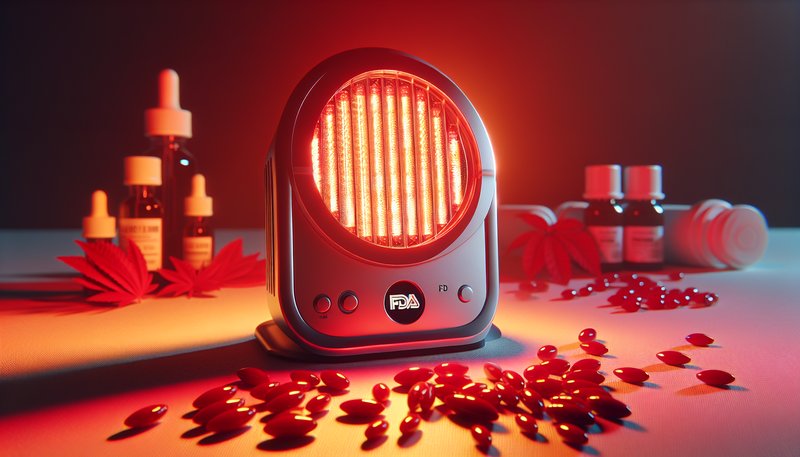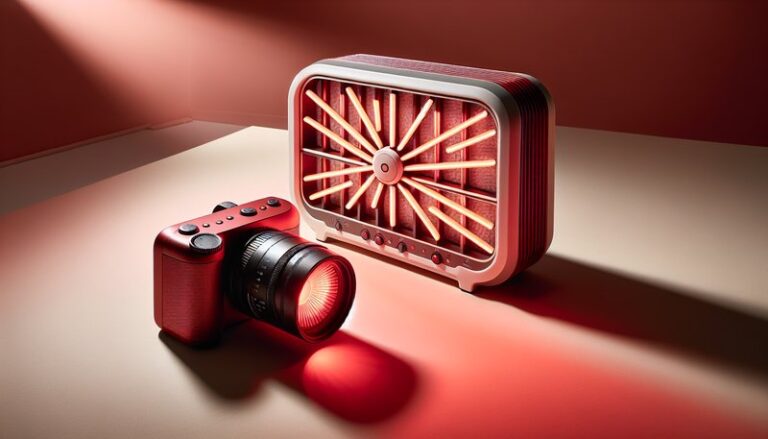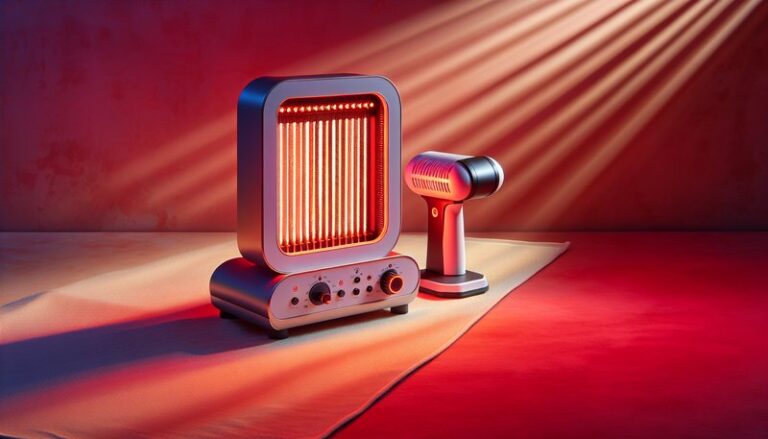What Red Light Therapy Devices Are Fda Approved?
What Red Light Therapy Devices Are FDA Approved?
What if a simple light could aid in healing, enhance your skin’s appearance, and reduce pain? The burgeoning field of red light therapy offers just that. But, with various devices on the market, how do you know which ones meet safety and efficacy standards?
This article will provide an overview of FDA-approved red light therapy devices. We will cover what red light therapy is, its benefits, considerations to keep in mind, alternatives, and frequently asked questions to help you make informed decisions about this innovative treatment.
Key Takeaways
- FDA approval indicates that a device meets specific safety and effectiveness criteria for treating certain conditions.
- Red light therapy devices are widely used for skincare, pain relief, and overall wellness.
- For optimal results, proper usage, and understanding the device’s specifications is crucial.
What is Red Light Therapy?
Red light therapy (RLT) is a non-invasive treatment that uses low-wavelength red light to stimulate cellular processes. This therapy promotes healing and regeneration in various tissues. By penetrating the skin, red light activates mitochondria, leading to increased ATP production—our cells’ energy currency—which in turn can facilitate healing.
Uncover the facts in No.
Red light therapy is often utilized in dermatology for its potential to improve skin texture, reduce the appearance of scars, and alleviate inflammation. Additionally, it’s gaining traction in sports medicine for its ability to help athletes recover from injuries.
What are the Benefits of Red Light Therapy?
Red light therapy is celebrated for its myriad of potential benefits. Let’s delve into some of the most notable ones:
Enhanced Skin Health
Red light therapy can help ameliorate skin conditions such as acne, rosacea, and signs of aging like wrinkles and fine lines. Clinical studies suggest this therapy boosts collagen production, improving skin elasticity and overall appearance.
Pain Relief and Reduced Inflammation
Many users of red light therapy report significant pain relief. Research indicates that RLT can reduce inflammation in conditions such as arthritis, joint pain, and muscle soreness, providing a drug-free approach to managing discomfort.
Improved Wound Healing
RLT has shown promise in accelerating the healing process for wounds, cuts, and surgical sites. By enhancing cellular regeneration, therapists have achieved faster recovery times and reduced scar tissue formation in patients.
Enhanced Muscle Recovery
Athletes have increasingly turned to red light therapy to speed recovery after intense workouts. Studies suggest that RLT can reduce delayed onset muscle soreness and expedite the healing of muscle strains.
Is it Possible to Use Red Light Therapy for Home Treatment?
Yes, many FDA-approved red light therapy devices are designed for safe and effective home use. These devices range from handheld units to larger panel systems, allowing users to incorporate RLT easily into their daily routines.
What are the Advantages of Home Treatment?
Utilizing red light therapy devices at home offers several benefits:
- Convenience: Home devices allow users to access therapy whenever suited to their schedules, eliminating the need for appointments.
- Cost-Effective: Investing in a home device can lead to savings compared to ongoing clinic visits, making RLT more accessible.
- Comfort: Users can experience therapy in a familiar environment, enhancing relaxation and overall comfort.
What are the Disadvantages of Home Treatment?
While at-home red light therapy is beneficial, it does come with some drawbacks:
- Limited Medical Oversight: Users may lack the professional guidance necessary for optimal results or addressing complex conditions.
- Device Varieties: The market’s sheer variety can make it challenging to choose a safe and effective device, necessitating research.
- Variable Efficacy: Home devices may not deliver the same level of intensity or effectiveness as professional tools used in clinical settings.
What are the Things to Consider Before Using Red Light Therapy?
Before starting red light therapy, there are several important factors to consider:
Device Quality
Ensure that the device you choose is FDA-approved and has documented clinical studies backing its claims. This helps guarantee safety and effectiveness.
Treatment Guidelines
Familiarize yourself with the manufacturer’s suggested use guidelines, including duration and frequency of treatments. Adhering to these can optimize results.
Skin Sensitivity
Individuals with specific medical conditions or those on certain medications may experience heightened sensitivity. Consulting a healthcare professional before initiating therapy can ensure it’s safe for you.
What are the Alternatives to Red Light Therapy?
While red light therapy is a powerful tool, several alternative treatments may be beneficial depending on your needs:
Cold Laser Therapy
This treatment uses low-level lasers similar to red light therapy but can be more intensive. It’s used primarily for pain management and tissue healing.
Infrared Therapy
Different from red light, infrared therapy utilizes longer wavelengths to penetrate deeper into tissues, making it suitable for muscular pain relief and inflammation.
Discover the in-depth guide Red Light Therapy Frequency
Microcurrent Therapy
Microcurrent therapy employs low voltage electrical currents to imitate the body’s natural current, aiding in tissue repair and rejuvenation by enhancing circulation and ATP production.
Conclusion: Is it Recommended to Use Red Light Therapy?
Red light therapy presents a promising approach to healing, skin health, and pain relief. With an increasing number of FDA-approved devices available for home use, it is more accessible than ever. However, it is essential to consider device quality, treatment guidelines, and any personal health conditions before starting therapy. Thus, for individuals seeking non-invasive solutions for skin and health concerns, red light therapy is certainly worth considering.
Frequently Asked Questions
What conditions can red light therapy treat?
Red light therapy is used for various conditions, including acne, joint pain, muscle recovery, and wound healing. Each FDA-approved device may have specific indications based on clinical studies.
How often should I use red light therapy?
Most devices recommend sessions ranging from 10 to 30 minutes several times per week. It’s vital to follow the manufacturer’s guidelines for the best results.
Are there any side effects of red light therapy?
Generally, red light therapy is safe with minimal side effects. Some users may experience temporary redness or sensitivity, but these tend to be mild and resolve quickly.
Can anyone use red light therapy?
While many people can benefit from RLT, caution is advised for those with specific medical conditions or skin types. It’s wise to consult with a healthcare provider if unsure.
What should I look for in an FDA-approved red light therapy device?
Look for devices that list FDA approval, have positive customer reviews, include clinical study results, and clearly state their intended use for efficacy and safety.
Red light therapy holds tremendous potential, and understanding its FDA-approved devices will empower users to harness its benefits effectively and safely.






